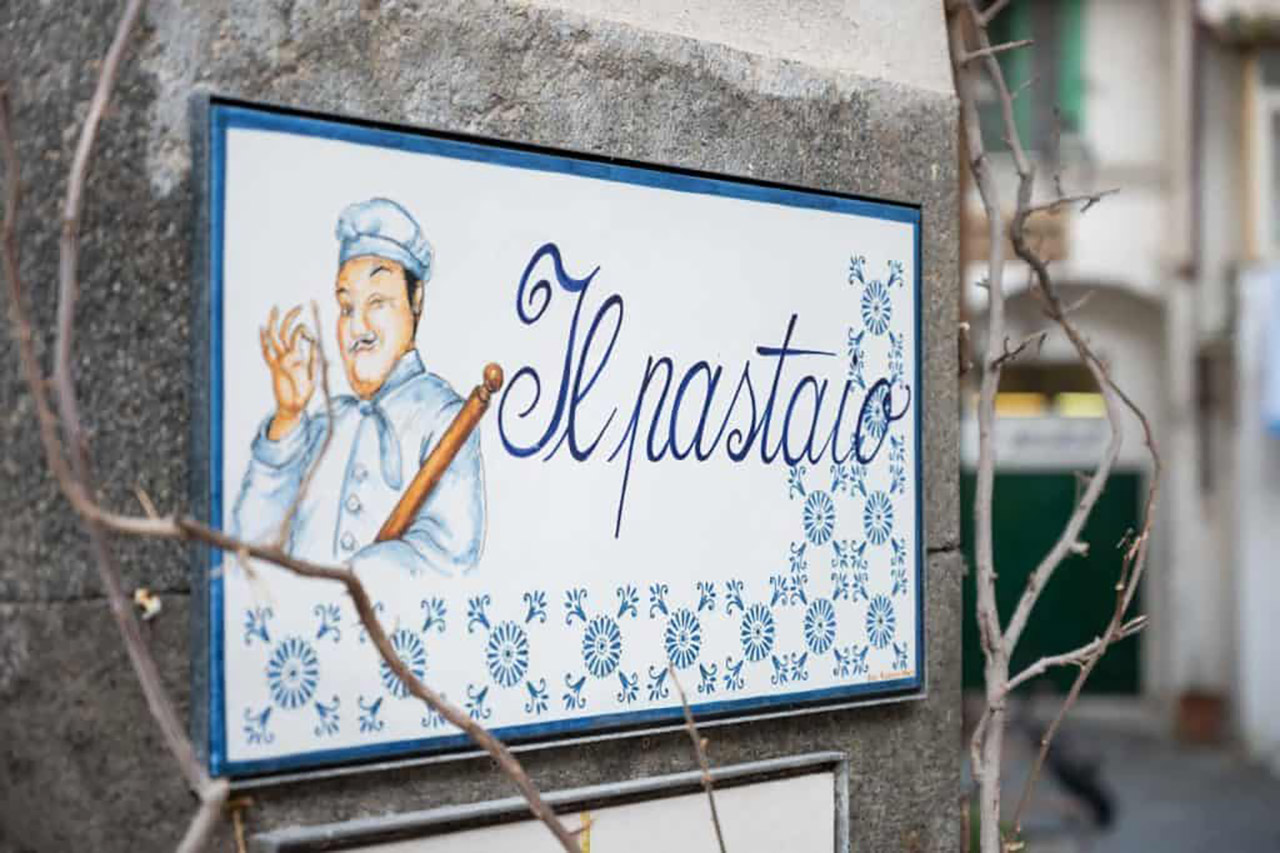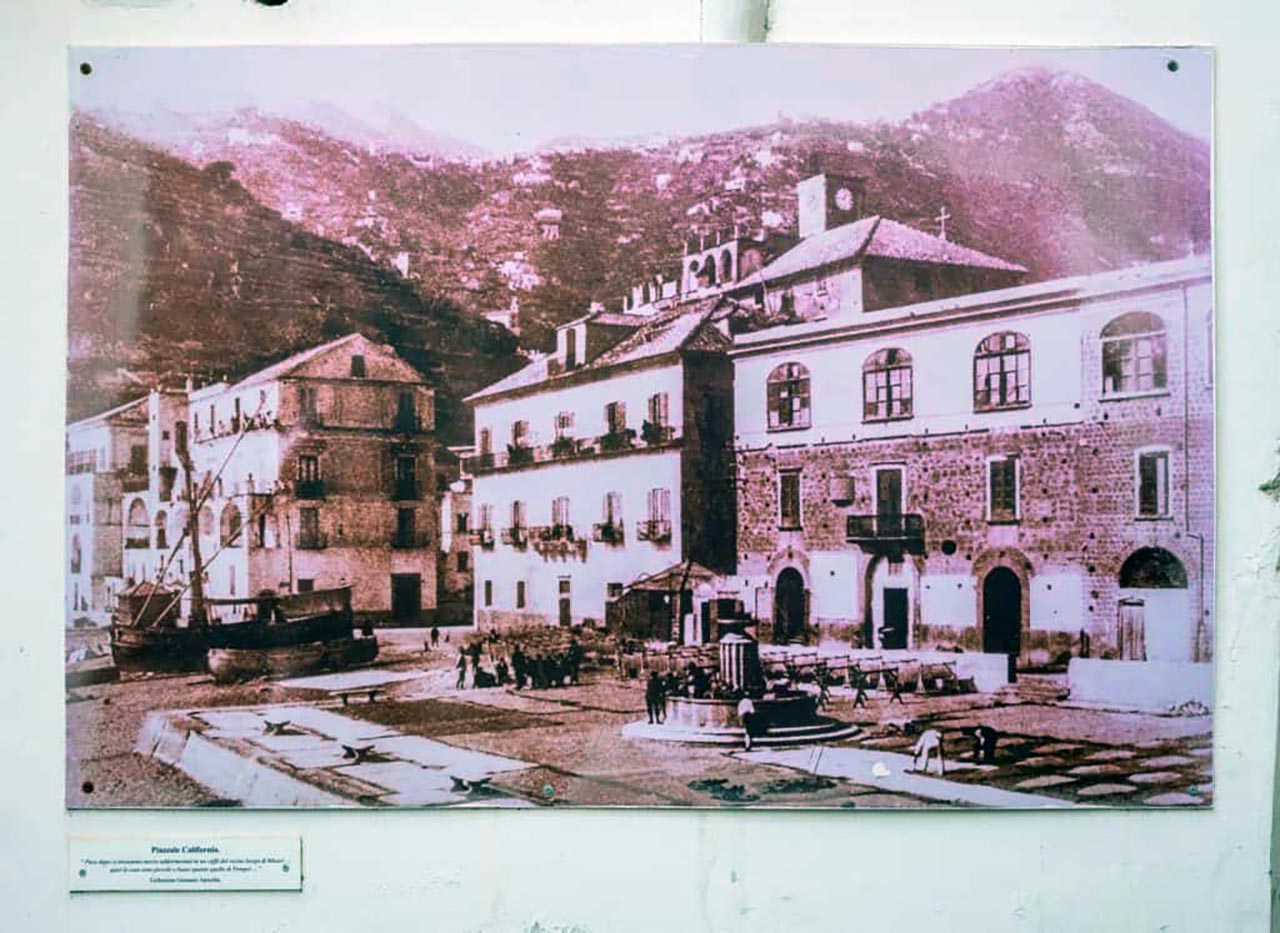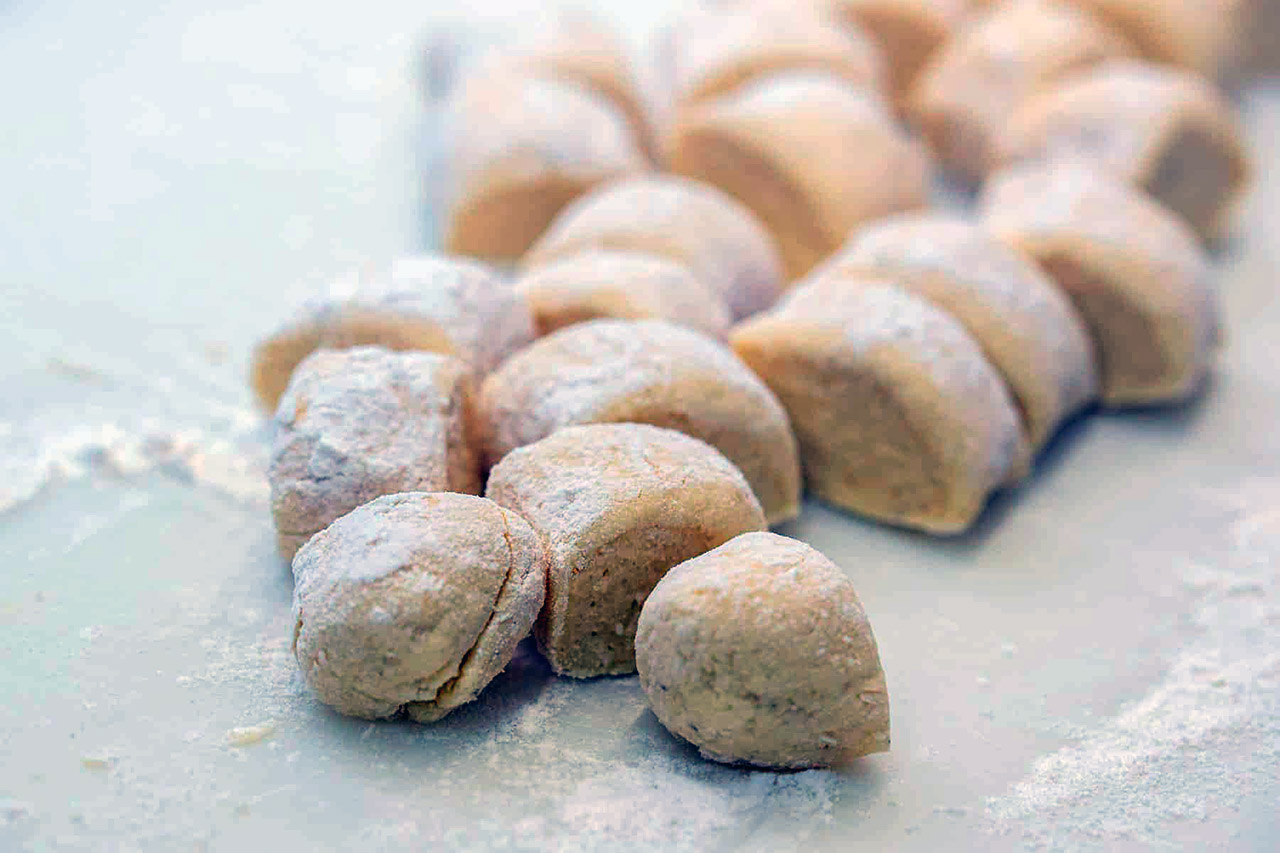Since the Middle Ages, the elected City of Taste, Minori, has distinguished itself for pasta production. We went to Il Pastaio, where we met Marco Della Pietra, who still carries on the memory of the past.
December 6th. By Anna Volpicelli, photo by Salvatore Guadagno
Minori is probably the place on the Amalfi Coast that still preserves the gastronomic and artisan traditions of the area. Therefore, it was not by chance elected the City of Taste. An appellative is also present on the letterhead of the municipality.
Minori, for years, has been part of the Gusto Italia in Tour, the event dedicated to promoting and highlighting typical products, Italian wine, and gastronomic excellence with a focus on the south. For centuries the city has distinguished itself by making its products an authentic culinary heritage.
All this is partly due to the presence of the Regginolo river, which, besides contributing to the economic growth of the paper industry, represented an opportunity for the population to develop an accurate pasta preparation system. It was just the presence of streams to facilitate the development of pasta-making to such an extent that workers, both men and women, were called maccaronari.
“Even Amalfi and Atrani in the past were reference points in the production of pasta, but Minori was the most profitable one – Mario De Iuliis, from Minori and National Advisor of UNPLI, tells us – Minori boasted about six mills, a series of mortars and 54′ ngegni (machinery, editor’s note)”. All this contributed to the birth of many pasta factories, which served as real factories and retail stores“.

The ‘ndunderi, the most ancient pasta
In a short time, the city became a real industry wherein the square and near the banks of the river placed the pasta to be dried under the sun. It is not easy to identify the first forms of pasta produced, but surely among the most ancient ones of the area, there was that of the ‘ndunderi, a kind of gnocchi with a bigger shape.
This tradition is still kept alive today by Marco Della Pietra, owner of Il Pastaio, the only pasta factory on the Amalfi Coast specializing in fresh pasta. “Between about 1700 and 1800 – says Marco Della Pietra- Minori exported pasta outside the Kingdom. Then there was the union with Gragnano, in which some Minorians moved to this location to start a whole industry.”
The Fusion with Gragnano
History tells that in about 1700, many pasta makers from Minori crossed Monti Lattari to settle in Gragnano. Here little by little, they created real production factories. Thanks to the work of Minori population, a productive activity that led Gragnano, over the years, to become the Italian capital of pasta.

Research and Passion
Della Pietra is the only one who, to this day, works pasta by hand in his pasta factory, which is taken by storm by residents and tourists alike, especially for its ‘ndunderi. “Before I started this full-time job, I was a painter. I inherited this business about ten years ago from my uncle. Since I was a kid, I would come in and help out in my free time, especially during the summer season, and at Christmas, I would help my family in the pasta factory.” In his small store, above the counter, a menu describes all types of pasta “The most popular is the ravioli with lemon and ndunderi, as per the good tradition of Minori.”
Marco and his uncle have conducted much research over the years to trace the ancient tradition of making ndunderi. This recipe seems to reinterpret the palline latine, a typical Roman dish. “Not many documents testify to this recipe, but it seems that the first one dates back to 1600 when they were made with goat cheese, buckwheat, egg, fig sap, and some herbs. We took it and revisited it. To make ndunderi, I use cow’s milk ricotta, flour, egg, grated cow’s cheese, salt, pepper, and nutmeg. Although now I’m trying to use sheep’s milk ricotta, to get closer and closer to the origin of this tradition.”
From festive food to daily dish
Suitable all year round, they are usually eaten on July 13, the day of Saint Trofimena, the patron saint of the city of Minori. “In ancient times – says Della Pietra – on the evening of the procession, the participants presented themselves in the streets with their shirts soiled with sauce as a sign of respect for tradition. This meant that before participating in the event, they had eaten the ndunderi”.
Now, those times are far away, but the memory is still alive in the memory of the village elders. And the ndunderi are consumed every day of the year in different ways. “Even if – says Marco – the best way to taste them is with sauce, as tradition wants.”

